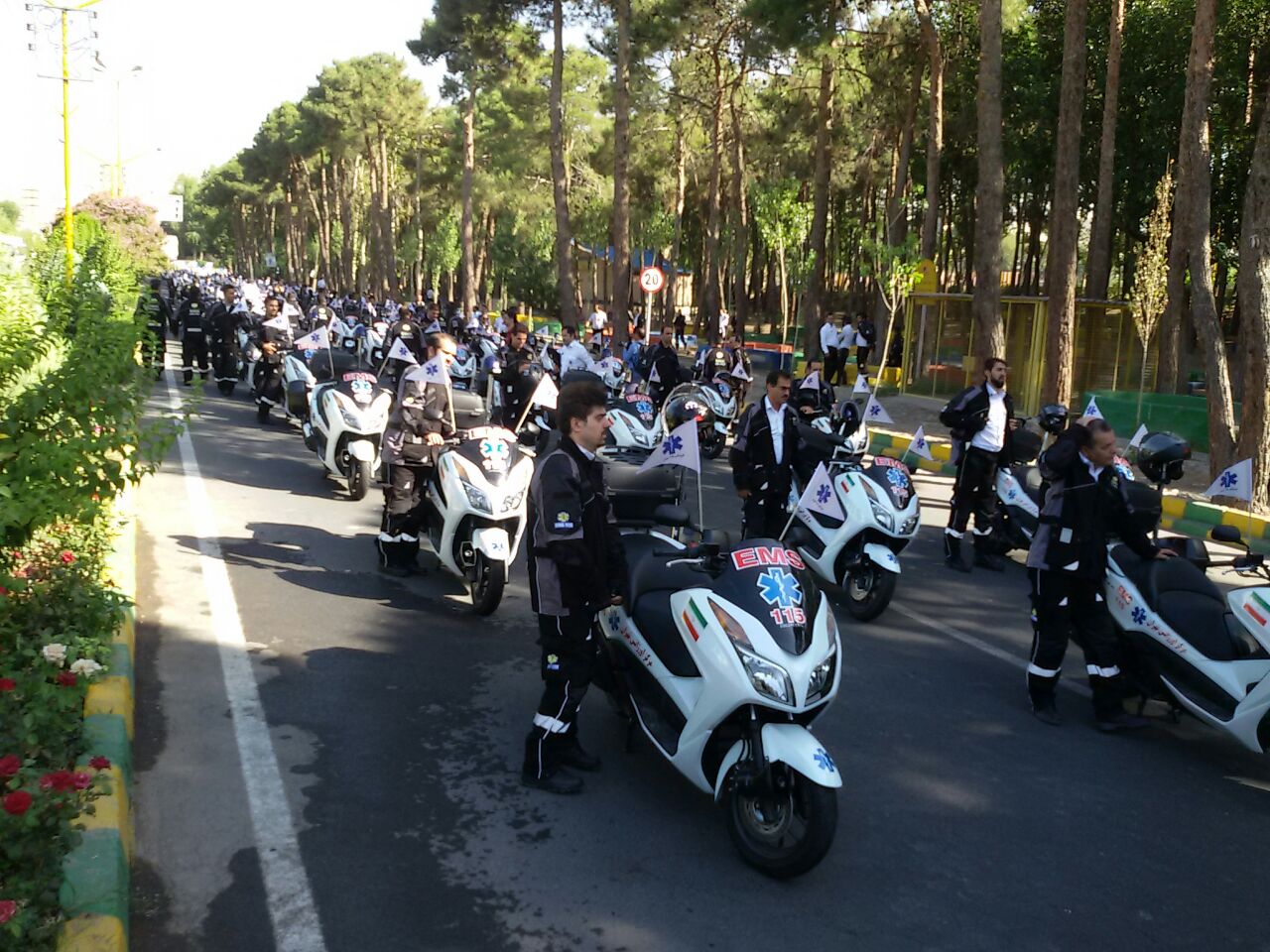For patients who suffer life threatening health conditions early access to emergency treatment is crucial. After all, it is a case of life and death.
Pointing to the 24/7 service for heart attack and brain stroke patients in 110 hospitals across the country, Mohammad Aqajani, deputy minister of health for treatment, elaborated on the benefits of motorcycle ambulances in metropolises like Tehran.
“Earlier this week, 200 motorbike ambulances were added to Tehran’s medical emergency fleet,” he was quoted as saying by ISNA. “We are in need of 747 ambulances while currently only 185 are in service in the city.”
Recalling that near permanent traffic congestion in the metropolises is the main obstacle in the way of rapid response to emergency cases, he said, “Adding motorcycle ambulances to the emergency fleet can help address the problem.”
Around one billion rials ($28,500) have been spent on purchasing and equipping each motorcycle.
“From among 529,000 emergency missions performed each year by Tehran Emergency Medical Services staff, 64% are in need of emergency care on the spot before they can be moved to a hospital. Getting to the scene quickly is vital,” Aqajani said.
He noted that in many cases patients do not need to go to a hospital after being treated at the scene, “but getting there as fast as possible is critical.”
Last year (ended in March) an advanced system for provision of timely treatment to patients with heart attacks and brain strokes was launched in the country.”
“Based on the new system, pre-hospital electrocardiogram is obtained from the patients and the EEG plus a dispatch code (which predicts pre-hospital interventions) is sent to a nearby hospital prior to the patient’s arrival at the medical facility,” he said.
Patients are taken directly from the scene to a relevant ward at the hospital, because physicians have key information about their condition before they arrive, allowing them take necessary measures immediately.
“Immediate care helps ensure patient’s survival and preserving more of the healthy heart and brain tissue,” Aqajani said.
According to Pir Hossein Kolivand, head of the country’s EMS, at present emergency response time is around 28-38 minutes and the Health Ministry says it wants to reduce this to 10-12 minutes in the major urban areas.
Earlier, Health Minister Seyyed Hassan Qazizadeh Hashemi had said that in smaller cities ambulance services meet the target of reaching patients with life threatening conditions within 8-15 minutes. However, in the sprawling cities the story is something else. Many times ambulances are unable to reach seriously-ill patients soon enough due to the torturous traffic.
Air Emergency Services
Aqajani pointed to efforts by the ministry to expand air medical services across the country and said, “Currently there are 32 air emergency stations in Iran.”
There were no air emergency stations before the Health Reform Plan was launched in 2014.
According to figures released by the Health Ministry, between 2014 and 2016, air ambulances transported over 4,000 patients and injured people to hospitals by conducting 2,600 flights.


